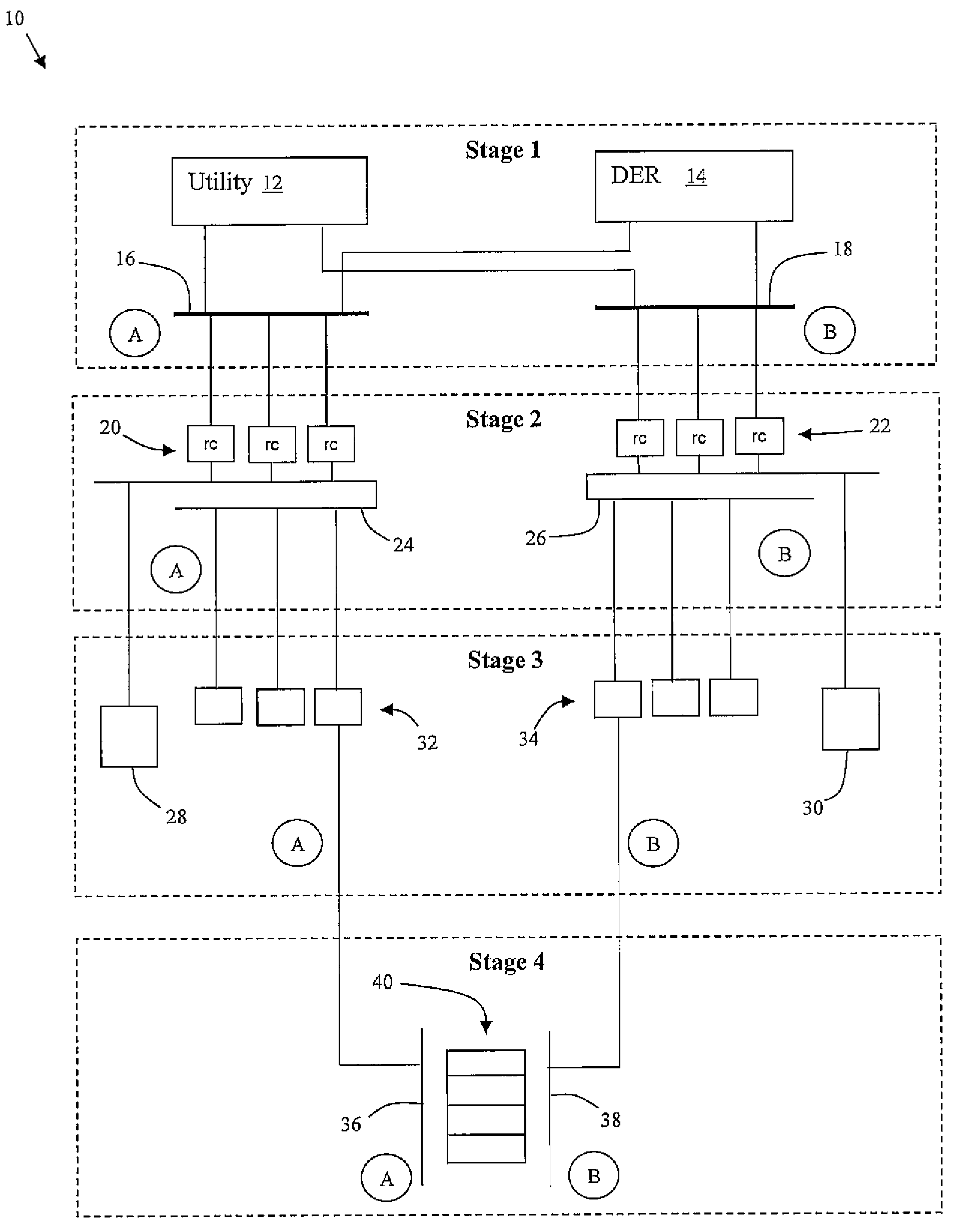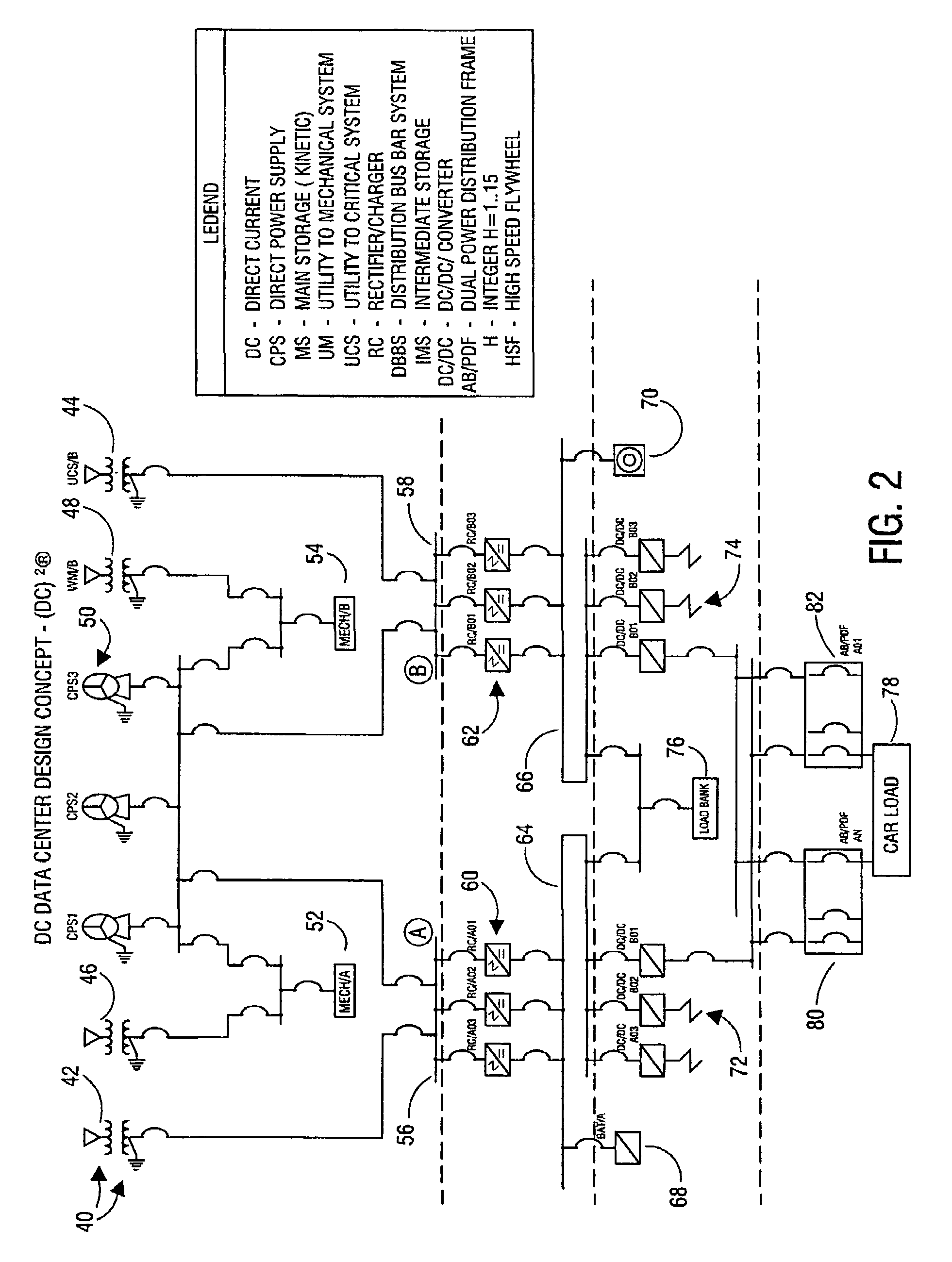DC-based data center power architecture
a data center and power architecture technology, applied in the field of power distribution systems, can solve the problems of significant waste of energy resources, drive up the cost of operating data centers, and culprits of power consumption, so as to achieve the effect of reducing monthly power costs, ensuring server reliability, and ensuring reliability
- Summary
- Abstract
- Description
- Claims
- Application Information
AI Technical Summary
Benefits of technology
Problems solved by technology
Method used
Image
Examples
Embodiment Construction
[0020]Referring now to drawings, FIG. 1 depicts an overview of an illustrative DC-based power distribution architecture 10 for powering critical loads 40 in a data center. Critical loads 40 are the main loads of a data center and include, for instance, equipment installed in cabinets (e.g., servers, computing components, etc.), on racks (e.g., telecom equipment such as routers and switches) or directly on the floor (e.g., heavy storage devices, etc.). Mechanical loads (not shown in FIG. 1) are related to HVAC systems, plumbing systems and various other essential loads supporting the critical loads 40. Note that for the purpose of this disclosure the term “data center” may refer to any facility that includes high density devices and / or other systems that run on DC, such as computer systems, servers, telecom equipment, medical equipment, etc.
[0021]Power distribution architecture 10 is shown broken down into four stages. In general, stage 1 provides an AC power distribution system that...
PUM
 Login to View More
Login to View More Abstract
Description
Claims
Application Information
 Login to View More
Login to View More - R&D
- Intellectual Property
- Life Sciences
- Materials
- Tech Scout
- Unparalleled Data Quality
- Higher Quality Content
- 60% Fewer Hallucinations
Browse by: Latest US Patents, China's latest patents, Technical Efficacy Thesaurus, Application Domain, Technology Topic, Popular Technical Reports.
© 2025 PatSnap. All rights reserved.Legal|Privacy policy|Modern Slavery Act Transparency Statement|Sitemap|About US| Contact US: help@patsnap.com



